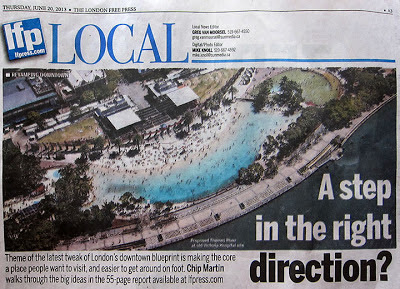This is a work in progress. This is not a finished post.
_______________________________________________
I had plans. When I retired I was going to travel: Uzbekistan, Western China, Romania . . . I had a long list. I'm now 65 and my old list isn't getting any shorter. My passport has been shelved, permanently if my wife, supported by some close relatives, have their say. I've been told to drop all thoughts of international travel and I can blame my heart, my ICD. We'll see. I'm keeping my options open.
So, where would I like to go first? At the moment, Romania gets the nod. Bill, my daughter's father-in-law, shakes his head: "No." "What would you do if you suffered a heart event while in Romania," he asked.
"Good question," I reply. And then I recall the words of a travel agent specializing in travel to places once which were once hidden from western eyes behind the now-fallen iron curtain: "We are talking sophisticated Europe here. We are not talking about Kansas." With that attitude in mind, I began my research into Romania, its cities and its towns.
I've never been to Romania but I have been to Slovenia, occupying the norther part of the former Yugoslavia. It was an eye-opener. Even my wife, a timid traveller, liked Slovenia. It's a beautiful country filled with friendly people.
The capital of Slovenia, Ljubljana, has a population only 75 percent the size of that of London, Ontario, my hometown, but in many ways the Slovene capital is a much nicer city. I quickly learned the travel agent was right: Ljubljana is sophisticated Europe. Traveling in Kansas, in some respects, is more difficult.
Remember the worry about finding medical help in Romania. It may not be a concern. Romania joined the European Union (EU) in 2007, a move that recognized the great strides made by Romania in distancing the country from the dark days of dictator
Ceausescu's rule.
Today Romania is a popular
medical tourism destination. Health care is skewed towards the wealthy, according to
The World Bank, but clearly quality medical treatment is available. Having an EKG taken should not be a problem.
It seems if I do decide to travel to Romania, I must land at the Bucharest airport. Bucharest, also known as Little Paris, earned its nickname before the First World War. Although it still clings to its heritage name, many of the heritage buildings that earned it the moniker have now been demolished.
Of course, the passing decades thinned the ranks of heritage buildings but Second World War bombing runs left vast tracts of the heritage urban landscape in ruins. Lastly, according to Wikipedia, Ceausescu demolished much of the Old Town in the core of Bucharest to construct his grandiose presidential palace, one of the world's largest buildings: 19 Orthodox Christian churches, six Jewish synagogues, three
Protestant churches (plus eight relocated churches), and 30,000
residences were all destroyed in a massive state-sanctioned act of vandalism.
For some pictures of Old Town today, check out the 54 pictures posted at last count on the
Trip Advisor Internet site. It appears cars are either banned or their use severely curtailed in this heritage district. Google Street Views has covered most of the city but was unable to post anything from Old Town.
If I make it to Bucharest soon, I'll be sure to pick up the
in your pocket essential city guide for Bucharest. Here is a link to the section of the guide on
Bucharest taxis.
The
in your pocket guides try and reveal a city warts and all, as they say. This makes them good guides for visitors.
This contrasts to the approach of travel guides like
travel that way which present a glossed-over image. Click the following link and you'll see what I mean:
Bucharest-Winter Fairyland. I should add that I wander about cities and towns wearing rose coloured glasses. I'm sure I'd see the snow blanketed Bucharest as beautiful as pictured. Hey, those photos have made me consider a winter visit.
One thing I've found is that if I say Romania, the listener says poverty. When I get a chance to add more to this post, I'll address the out-of-date idea that Romania is dirt poor. I'll also look at orphanages and how far Romania has left the dark days of the Ceausescu dictatorship and put the orphanage debacle behind it.
This post is a work in progress but as I have posted link to the main
picture, the author of the image may want to see how I have used his
photo. For that reason, I am posting this post in installments and I will complete this post in the coming days.
Here are some links to travel in Romania to keep you happy for the time being:
Visiting Bucharest
Best of Romania
Spas in Romania
Cheers!


















